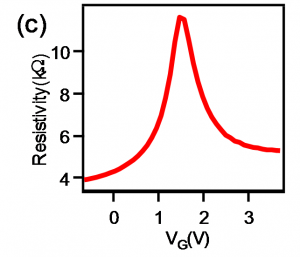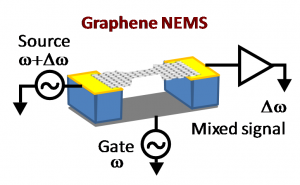Electronic Transport in Graphene Devices
Graphene is an exciting new material in the world of electron transport. At exactly one atom thick, graphene is an ideal two-dimensional substance. Its unique electronic structure, described at low energy by the Dirac equation, leads to phenomena such as room-temperature ballistic transport on the order of microns and a room-temperature mobility of up to 100,000 cm2/Vs. Our research investigates the use of this new material in a myriad of devices. We have combined graphene with superconducting metals to create devices that can probe the mixture of relativistic quantum mechanics and superconductivity. New phenomena such as the relativistic Josephson effect and specular Andreev reflection are predicted to emerge at this boundary, and we are actively pursuing them. We have also created devices that combine graphene’s electronic structure with its exceptional mechanical properties. Graphene is one of the strongest materials on earth, with an unsurpassed Young’s modulus on the order of 1 TPa. We build and test suspended graphene resonators, which may form the foundations of a new generation of chemical, mass, and biological sensors. We also carry out research on bilayer graphene, a two-layered stack of graphene, which maintains many of the unique qualities of monolayer graphene but adds to them a bandgap. By opening a bandgap in graphene, we hope to create quantum point contacts, quantum dots, and other interesting nanostructures. Finally, we are also nanostructuring graphene with crystallographic precision. Graphene edge structures are predicted to have a strong effect on the electrical, chemical, and magnetic properties of graphene structures. We have successfully built devices with edges defined along graphene’s crystallographic axis, and we can use such devices to study edge-effects on graphene’s electronic transport.
- Figure 1: A backgate sweep measurement showing graphene’s characteristic Dirac peak in resistivity.
- Figure 2: A schematic of a graphene nanoresonator suspended between two contacts. The circuit formed measures the graphene’s resonance frequency by way of a mixing current.

